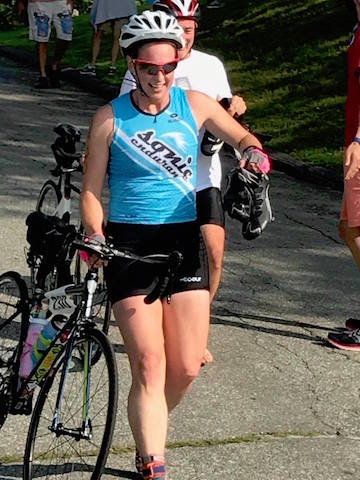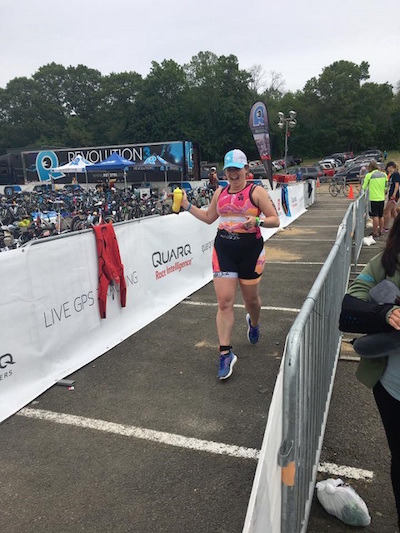Thoughts for the Future of Triathlon
What is triathlon?
This is one of the many unanswered questions coming out of this year’s TBI Conference. It sounds easy enough to define – it’s swimming, biking, and running. But is it just the event? Or is it a lifestyle?

For the last four decades, triathlon has been defined nearly exclusively by the preparation and participation for some distance of racing. We have built our industry on the backs of the idea of a triathlon season, all to culminate in your “A” race of the year. This resulted in great boom cycles, but we’ve been awash in the bust side of the equation for the last seven years. Races disappeared. Retailers closed.
Meanwhile, our friends in the run industry have endured with less of an impact to their business. Why? Because they capitalize on this: that many runners never will participate in a race. For those runners, it is a lifestyle, not a finish line. As we evaluate how to grow triathlon in 2018 and beyond, we’re trying to put thought on how triathlon can embrace the lifestyle trend without always being defined by racing, and how to provide value to these individuals. One proposed solution: greater value from USA Triathlon membership through additional programming appealing to general age-group members and support for tri clubs that do more to facilitate local community-building.
Do we need to keep triathlon just as it is?
Given today’s announcement of Road Optional, the answer is a resounding “no.”

The only reason that Ironman distances are what they are is due to happenstance in Hawaii 40 years ago. There’s nothing that says that a race must be of standard distance (although I do appreciate truth-in-advertising if you use the term “half” or “full”). But new events are part of how we can grow the size of our tent: gravel. Odd distance. Duathlon! Aquathlon! How about some pool swims, even in the summer? Although this is a technique that is likely to appeal to someone who is already in the sport, it should help with client retention. USA Triathlon noted that, after injury, other interests were cited as a frequent reason for dropping out of the membership pool. Giving people more diverse event options should help keep people in the sport for a longer period of time. Let’s even look at full indoor racing to appeal to larger groups (or weather-proofing, to a collective eyeroll by every TBI attendee).
Do We Need to Change the Rules?
One needs to look no further than the popularity of Zwift than to know the power that a group provides. It brings people to train together, to share stories, and often socialize after them. Everything from Masters programs to run clinics all frequently engage people who, on the outside, should be right in our wheelhouse – so why don’t they call themselves triathletes?

The competitive rules of races were frequently cited as a barrier to participation. Let’s look at two events: your local half-marathon versus an Olympic-distance triathlon. At your local half, more often than not you can listen to music if your heart desires. You can run with a friend. You could be a pace group leader. You have countless options for what you want to do! With a triathlon, though, these options are all against the current competitive rules. If you wind up with a sizable penalty at your first race, what is the likelihood that you would ever return to the sport? What if you were disqualified at that first race because volunteers told you to make a wrong turn?
We need to do a better job at identifying our first time participants and helping them cross their first finish line with a smile on their faces. To that end, then, we would recommend segmenting out the USA Triathlon rule book into two parts: the competitive rules and the safety rules. The competitive rules would include things like drafting, pacing on the run course, and anti-doping regulations. The safety rules, meanwhile, would comprise of helmet use, headphone use on the bike, and illegal drug use. At a given race, the early waves would be the competitive waves; the last two waves would be the safety rules waves. This would allow people to swim in the wave that they would desire, bike together, and run together without the hazards of blocking that generally result from wave timing.
And yes, this begins to address part of the elephant in the room: TUE usage and anti-doping controls. Having read enough threads on the topic on forums that aren’t this one, I can assure you: people are clueless. There is an assumption that if a doctor wrote a prescription, it must be OK. From a PR standpoint, USAT and USADA have already lost. But, if we enforce the anti-doping rules as part of the competitive rules, and exempt them (with the exception of illegal drugs) from the safety rules, we would allow people to participate without impacting the results of the event.

We Must Get Better at Our Marketing
A quick review of my last 90 served social ads from race producers and vendors alike all showed significantly similar imagery: nothing but rail-thin men and women with some type of either distant stare or grimace during the course of racing. The consistent drumbeat of similar body types seems to make it seem like you can’t race a triathlon unless you wear a size 2 / size 28 jean. Take a look at your gym, or at your next race. These images are not a realistic representation of our sport; if anything, they reinforce stereotypes that we are not as inclusive as we need to be.
Our call is this: it’s time to put every body type that participates in our sport on display. If we’re going to build community, we need to show that it’s more than just the front end of the field that is ready, willing, and able to participate. It’s something that any person who has the desire can do right now, without changing who they are. This call will manifest itself in one of many initiatives that you’ll see, dubbed “Strong At Any Size.”
Don’t Be a Dick
I have been guilty of being completely in the zone on race-morning and not knowing how to string a friendly sentence together, let alone a coherent thought. Now, look around in transition at your next race. You know who the new person is. Be friendly and introduce yourself. Go help them. Tell them that nerves are normal and that they’re going to have a fantastic day.
Attitude is everything when it comes to how you interact with everyone. We need to smash the reputation of being jerks to our fellow athletes. When in doubt: don’t be a dick.
[photo credits: Ryan Heisler, Road Optional]

